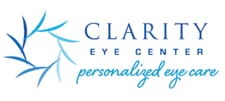Say Goodbye to Dry Eyes With E-Eye IPL at Clarity Eye Center!
If you’ve been struggling with dry, irritated eyes, we have exciting news for you! Clarity Eye Center is now offering the revolutionary E-Eye IPL (Intense Pulsed Light) treatment—a non-invasive, quick, and effective solution for Dry Eye Disease, specifically Meibomian Gland Dysfunction (MGD). What is E-Eye? The E-Eye device, developed by ESW Vision, is the first…
Read MoreUnderstanding and Managing Dry Eye Disease
Dry eye disease (DED) is a common condition that affects millions of people worldwide. It occurs when your eyes don’t produce enough tears or the quality of your tears is poor, leading to discomfort and vision issues. In this blog, we’ll explore the symptoms, evaluations, and treatment options for managing dry eye disease. Symptoms of…
Read MoreThe Light Adjustable Lens at Clarity Eye Center
At Clarity Eye Center, we’re dedicated to providing our patients with the latest advancements in eye care. That’s why we’re thrilled to introduce the cutting-edge Light Adjustable Lens (LAL), a groundbreaking innovation that offers unprecedented precision and customization for cataract patients. What is the Light Adjustable Lens? The Light Adjustable Lens is a unique intraocular…
Read MoreChristmas Lights & Astigmatism
People with astigmatism likely see lights streaky, blurry, fuzzy, surrounded by glare or halos. This happens because in dim light or at night your pupil dilates in order to allow more light into the eye. As it dilates and grows large, more peripheral light enters the eye. Increased blurring and glare resulting in fuzziness, particularly…
Read MoreKeep Yourself & Your Eyes Safe From COVID
As Covid-19 is still around it is important you are taking care of yourself. It is possible for people who have caught Covid to present with ocular symptoms, such as conjunctivitis, which is known as pink eye. Pink eye is an irritation or inflammation of the conjunctiva, which covers the white part of the eye….
Read MoreEye Infections in the Rainy Season
On rainy days we catch a break from the scorching heat, but the rainy season also triggers several air-borne infections. Your eyes become more prone to seasonal diseases with massive bacterial growth and virus outbreaks. The main reason behind increased eye infections is the heavy moisture content in the air, which becomes an easy breeding…
Read MoreRipped Contact Lens?
Ripped contacts lens can be very frustrating. We may wonder why lens can’t be made out of stronger material. More than 45 million Americans who wear contacts prefer soft lenses because the soft lens material is a lot more comfortable and is able to let a great deal of oxygen to the cornea, which keeps…
Read MoreHalloween Fun
We are officially in the month of Halloween. It’s a time for costume parties, haunted houses, trick-or-treating, and candy, but it is also unfortunately a time when there’s an increase in eye injuries. Many popular Halloween activities and costumes carry a risk of eye injury and eye infections. Here are some simple tips to avoid…
Read MorePressure Behind the Eyes?
Pressure behind the eyes does not necessarily have anything to do with an eye problem. There a few causes to the pressure behind the eyes such as migraines and related headaches, sinusitis, graves’ disease, optic neuritis or dry eye syndrome. Glaucoma is one common eye disease that could possibly lead to pressure behind the eyes. …
Read MoreWinter Eye Protection
Cold weather is just around the corner which means you still need to be taking care of your eyes. Indoor heat and forced air from car vents dries out your eyes just as it dries out your skin. In the summertime, the sun may feel hotter, but since snow is reflective it is important to…
Read MoreOur Locations
ROUND ROCK
4337 Teravista Club Dr.
Round Rock, TX 78665
GEORGETOWN
3204 Northwest Blvd
Georgetown, TX 78628
LEANDER
605 Crystal Falls Parkway
Leander, TX 78641
Monday - Friday
8:00 am - 4:30 pm
 Request an Appointment
Request an Appointment

